EuropeOn has recently been invited to share its take on the transition to e-mobility at an event organised by AVERE, the European association of electro-mobility.
The event featured a presentation of AVERE’s latest report on the “The End of the ICE Age” (available here), which sought to explore if the electrification of transport is a policy-driven process or if the industry is now in the driver’s seat and is leading the shift from internal combustion engines (ICE) to electro-mobility. The report shows that industry players are now on board and policy is not the only driver behind transport electrification.
While industry players are now increasingly committed to carrying out this transition, more cooperation across the value chain is required to ensure a smooth shift towards zero-emission transport. Indeed, this shift will have significant consequences on the European automotive workforce, who will need to evolve in order to meet this new demand.
More specifically, charging infrastructure is a new segment in the automotive sector that relies on the availability of skilled professionals that are not found in its traditional value chain. Electrical contractors are an essential provider of such professionals as they are responsible for the installations and maintenance of charging infrastructure, which is also a rather new area of business for them. Meeting this new and quickly rising demand for EV charging installations calls for matching numbers of qualified installers ready to take up this challenge.
EuropeOn took part in this panel debate to remind the audience of what is needed to secure the required number of available professionals and to ensure they have the skills to tackle these new and often more sophisticated installations.
With the ongoing work on the Fit for 55 package, new opportunities have opened up to act on the skills and workforce requirements linked to the energy transition and to transition towards zero-emission transport. EuropeOn has advocated for new provisions in the Directives for Renewable Energy and Energy Efficiency as well as for actions that can be taken directly at EU level that will contribute to ensuring adequate numbers of skilled installers are available:
-The revision/recast of directives on Renewable Energy (RED), Energy Efficiency (EED) and Energy Performance of Buildings (EPBD) should require Member States to assess the gap between available and needed installation professionals to achieve EU climate and energy objectives. This will confront Member States with the pressing discrepancy in available personnel and the challenges they will face in the attainment of EU targets. It will also encourage them to take appropriate action to promote technical careers and set up state-of-the-art training facilities.
-An ambitious EU campaign must be launched to change mindsets across Europe and enhance the attractiveness of technical/vocational education and careers in the twin transitions. Such a campaign should also aim at attracting a workforce reflective of the gender and cultural diversity of Europe, presently underrepresented in the sector. A Europe-wide campaign could be kicked off through an EU Skills Summit, inspiring national governments to develop bespoke campaigns in their own markets.
-Setting up a “Skills4Climate/Climate crafters Platform”, similar to the “Just Transition Platform”, is key to gather Member States, social partners, academia and all relevant EU and national stakeholders. Together, they can make technical careers a priority in the twin transitions, by alerting Member States of the consequences of inaction, fostering best practices and connecting the challenge to ongoing EU initiatives (e.g. Social Climate Fund, Just Transition Fund, ERASMUS+, Bauhaus initiative, European Year of Youth activities, EU Sustainable energy Week, VET week, etc).
